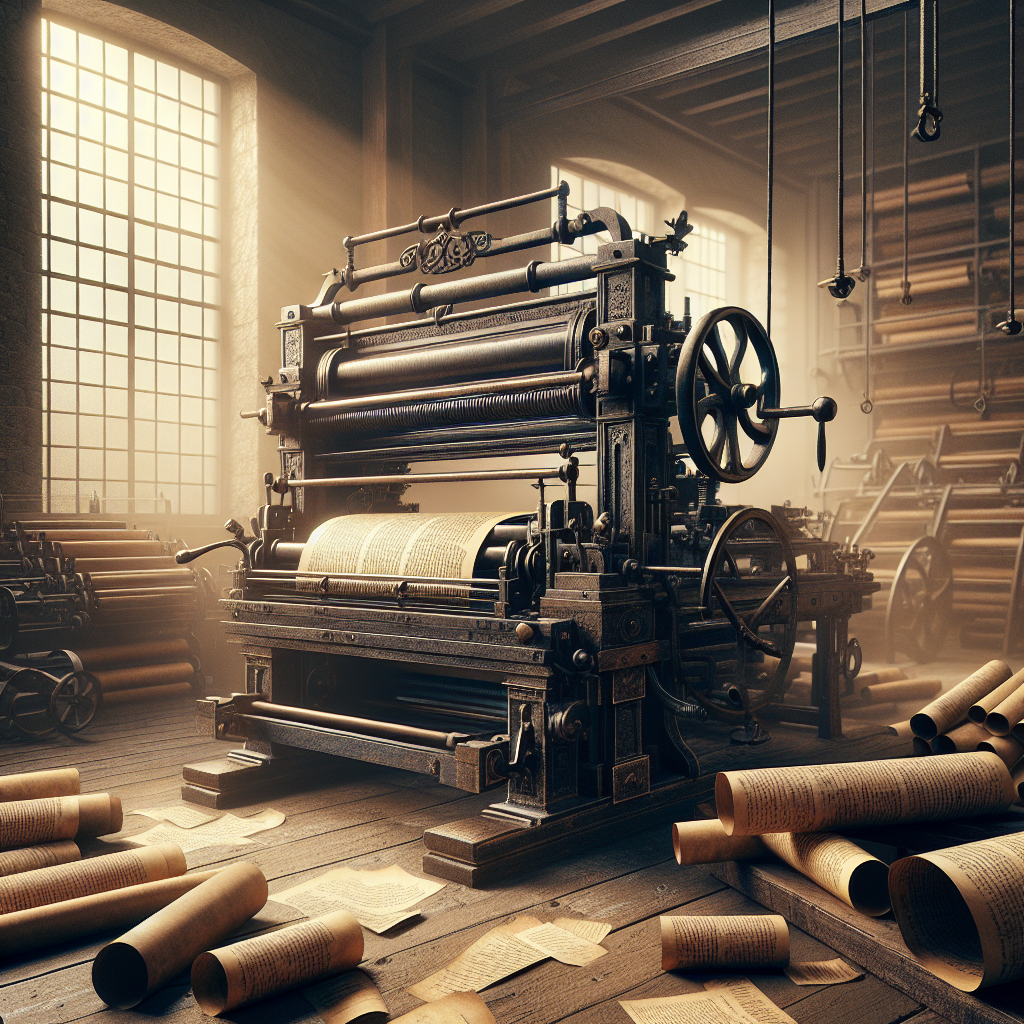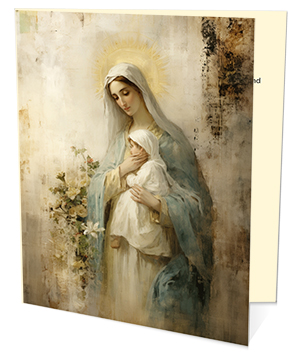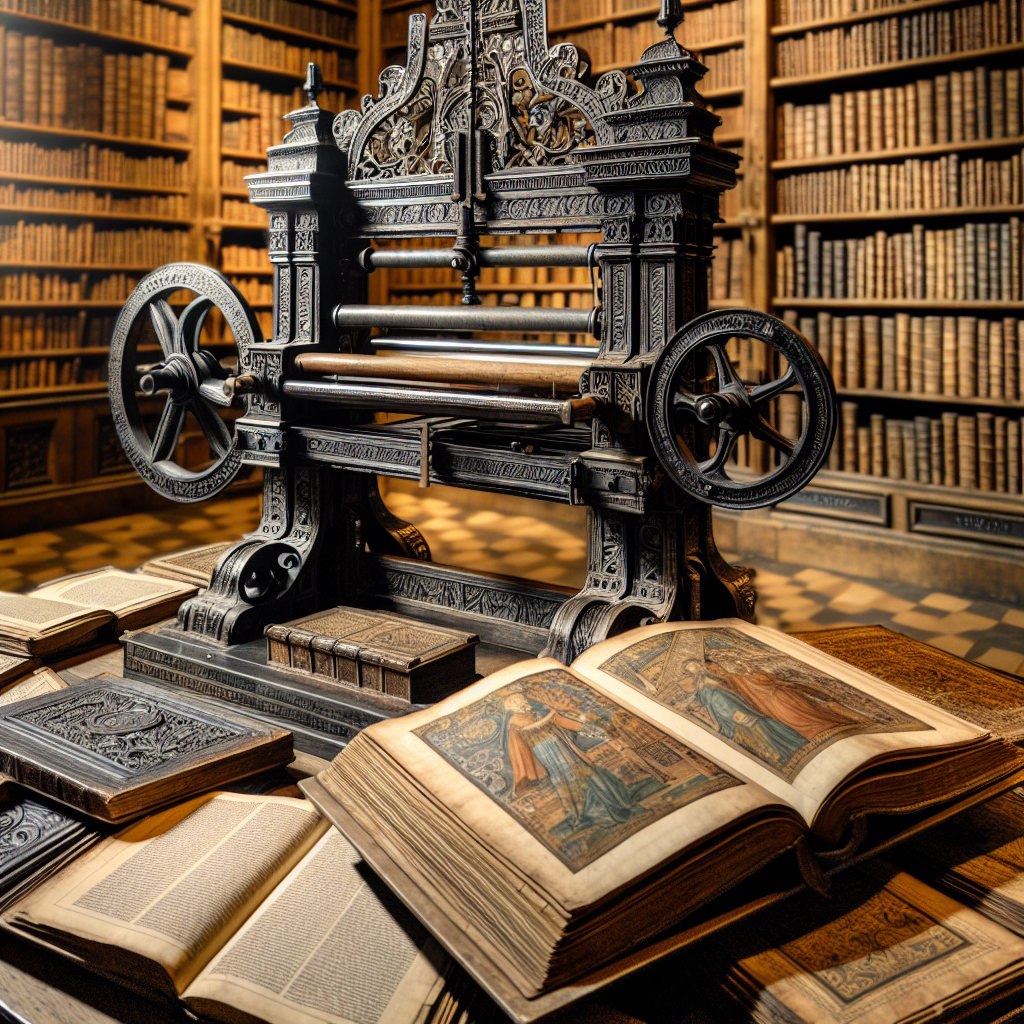The invention of printing technology has profoundly transformed the course of human history. Before the advent of the printing press in the 15th century, information was primarily disseminated through handwritten manuscripts, a laborious and time-consuming process. The introduction of movable type printing by Johannes Gutenberg revolutionized the way knowledge was shared and preserved. This innovation significantly reduced the cost of books, making them more accessible to the general public and facilitating the spread of ideas.
One of the most notable impacts of printing was the Renaissance, which was fueled by the widespread availability of texts on art, science, and philosophy. The printed word allowed for the exchange of ideas across geographical boundaries, leading to a more informed society. Furthermore, the Reformation was greatly accelerated by printed pamphlets and translations of the Bible, enabling individuals to engage with religious texts directly.
Today, the legacy of this historical advancement is evident in various aspects of our lives. From educational materials to cultural artifacts, the printed word continues to shape our understanding of the world. Furthermore, printing technology has evolved to include digital formats, expanding the reach of information even further.
Order funeral & memorial prints today at disciplepress.com to honor the enduring impact of printing in preserving memories.
How Printing Shapes Modern Communication

In today’s fast-paced world, printing continues to play a pivotal role in shaping modern communication. The rise of digital technology has not diminished the importance of print; rather, it has adapted to complement it. Printed materials, from newspapers and magazines to brochures and newsletters, remain essential tools for conveying information and engaging audiences.
One significant aspect of how printing shapes communication is through the creation of tangible materials that can be distributed widely. Printed brochures provide valuable information about products and services, while business cards establish personal connections in networking. In a landscape where digital content can often be fleeting, print offers a lasting and physical representation of ideas and messages.
Moreover, the use of print in marketing campaigns has demonstrated its effectiveness in reaching diverse demographics. Studies have shown that physical advertisements tend to have a stronger impact on consumers, eliciting higher engagement and retention rates compared to their digital counterparts. This highlights the enduring relevance of print in a multi-channel communication strategy.
Additionally, the rise of personalized printing has led to unique and targeted messaging. From custom postcards to tailored invitations, businesses and individuals can create printed materials that resonate with their specific audience, enhancing the overall effectiveness of their communication efforts.
The Role of Printing in Education Today

Printing has profoundly influenced education, serving as a foundational tool for learning and knowledge dissemination. In today’s educational landscape, printed materials remain integral, despite the increasing reliance on digital resources. Textbooks, workbooks, and study guides are essential components of classroom learning, providing students with the necessary resources to enhance their understanding of various subjects.
One of the key benefits of printed materials in education is their ability to aid in comprehension and retention. Studies have indicated that students often absorb information more effectively when they read from physical books rather than screens. The tactile experience of flipping through pages allows for better focus and engagement, fostering a deeper connection with the content.
Furthermore, printing plays a vital role in accommodating diverse learning styles. Visual aids, such as charts, diagrams, and illustrations, are commonly used in printed materials to support visual learners. Similarly, printed handouts and worksheets can be tailored to meet the needs of different learners, ensuring that all students have access to the information they require.
Additionally, the rise of educational printing services has enabled institutions to produce customized learning materials that cater to specific curriculum requirements. This flexibility allows educators to create resources that align closely with their teaching methods and student needs, enhancing the overall educational experience.
Influence of Printing on Art and Culture

The influence of printing on art and culture is profound and far-reaching, reshaping how we create, share, and appreciate artistic expressions. Historically, the invention of the printing press revolutionized the dissemination of art, allowing for the mass production of images and texts. This accessibility led to a democratization of art, enabling a wider audience to engage with cultural works previously reserved for the elite.
In contemporary society, printing continues to play a significant role in the art world. Techniques such as lithography, screen printing, and digital printing have expanded the possibilities for artists, allowing them to experiment with various mediums and styles. As a result, artists can produce limited edition prints that maintain the essence of their original works while reaching a broader audience.
Moreover, printed materials such as art books, exhibition catalogs, and posters serve as important tools for cultural promotion and education. They provide context and insight into the artists and movements that shape our cultural landscape. In addition, printed art can evoke emotional responses and provoke thought, encouraging discussions around societal issues and personal experiences.
The fusion of printing technology with digital platforms has further transformed the art scene. Artists now create digital prints that can be shared globally, breaking geographical barriers and fostering a more interconnected cultural dialogue. This evolution not only enhances the visibility of diverse artistic voices but also enriches the cultural tapestry of our society.
The Future of Printing in a Digital World

As we navigate an increasingly digital world, the future of printing holds intriguing possibilities that blend tradition with innovation. While it may seem that digital media could overshadow printing, the reality is that both can coexist and enhance each other. Many industries are recognizing the unique value that printed materials still offer, from tangible interactions to enhanced emotional connections.
The rise of on-demand printing is one of the most significant trends shaping the future of the printing industry. This technology allows businesses and individuals to print materials only as needed, reducing waste and enabling customization. For instance, personalized products such as photo books, calendars, and even memorial cards can now be tailored to individual preferences, making them more meaningful.
Additionally, advancements in digital printing technologies are paving the way for high-quality outputs that rival traditional methods. Techniques like 3D printing are revolutionizing how we think about production, allowing for the creation of intricate designs and structures that were once impossible to achieve. This evolution opens doors for artists, designers, and manufacturers, pushing the boundaries of creativity and functionality.
Moreover, the integration of augmented reality (AR) with printed materials is a fascinating development. By incorporating AR elements into printed products, creators can provide interactive experiences that engage audiences in new ways. Imagine a printed memorial card that, when scanned with a smartphone, brings up a video tribute or a gallery of cherished memories.
In summary, the future of printing is not a battle between digital and print but rather a symbiotic relationship that leverages the strengths of both mediums. As technology continues to advance, printing will adapt and thrive, ensuring its relevance in a fast-paced digital landscape.
Sustainable Printing Practices for a Better Tomorrow

In today’s world, where environmental consciousness is at the forefront of public discourse, sustainable printing practices are becoming increasingly essential. The printing industry is making significant strides in reducing its ecological footprint by adopting methods that prioritize sustainability while maintaining high-quality outputs. These practices not only benefit the environment but also resonate with consumers who value eco-friendly products.
One of the key components of sustainable printing is the use of recycled materials. Many printing companies are now sourcing paper from recycled content, effectively reducing the demand for virgin materials and minimizing deforestation. Furthermore, employing vegetable-based inks instead of petroleum-based inks significantly lessens harmful emissions and improves the recyclability of printed materials.
Another important aspect is the implementation of energy-efficient technologies. Many printing facilities are transitioning to energy-saving equipment and practices, such as LED-UV curing systems, which consume less energy and produce fewer pollutants. Utilizing renewable energy sources, like solar or wind power, further enhances the sustainability of printing operations.
Moreover, the concept of print-on-demand is gaining traction as a sustainable alternative to traditional bulk printing. This approach reduces waste by producing only what is necessary, minimizing excess inventory that often ends up discarded.
As individuals and businesses become more conscious of their environmental impact, opting for sustainable printing solutions is a meaningful way to contribute to a cleaner, greener planet. At DisciplePress, we are committed to providing eco-friendly funeral and memorial prints that honor your loved ones while respecting the environment. Order funeral & memorial prints today at disciplepress.com and make a positive difference in your community.
 Free Shipping Over $50
Free Shipping Over $50  888-432-8363
888-432-8363


 Obituary/Programs
Obituary/Programs No-Fold Memorial Programs
No-Fold Memorial Programs 4 Page Funeral Programs
4 Page Funeral Programs 8 Page Memorial Programs
8 Page Memorial Programs 12 Page Funeral Programs
12 Page Funeral Programs 16 Page Funeral Programs
16 Page Funeral Programs 20 Page Funeral Programs
20 Page Funeral Programs Tri-Fold Funeral Programs
Tri-Fold Funeral Programs Complete Memorial Packages
Complete Memorial Packages
 Cards & Bookmarks
Cards & Bookmarks Saint Prayer Cards
Saint Prayer Cards Folded Memorial Cards
Folded Memorial Cards Folded Holy Cards
Folded Holy Cards Memorial Bookmarks
Memorial Bookmarks Thank You Cards
Thank You Cards Share-A-Memory Cards
Share-A-Memory Cards Memorial Magnets
Memorial Magnets
 Memorial Posters
Memorial Posters Guest Books
Guest Books Slide Shows
Slide Shows Memorial Fans
Memorial Fans Death Announcements
Death Announcements Take Away Keepsakes
Take Away Keepsakes
 Church Products
Church Products









